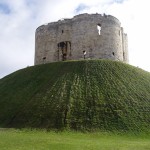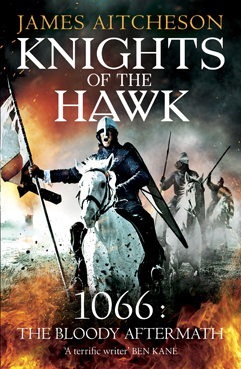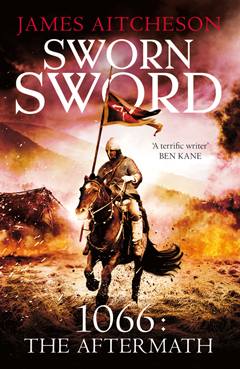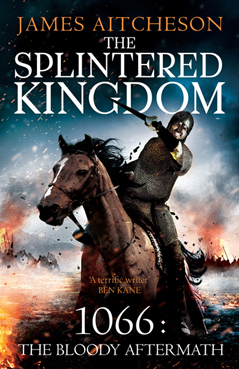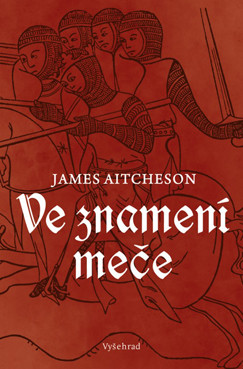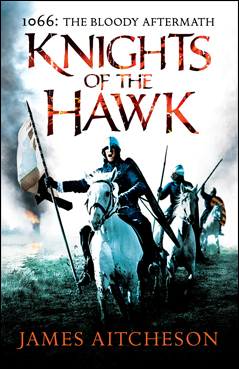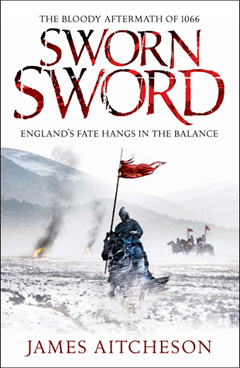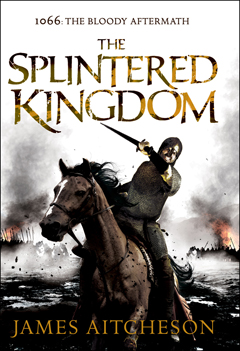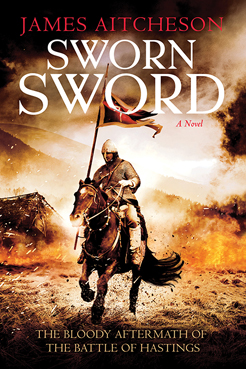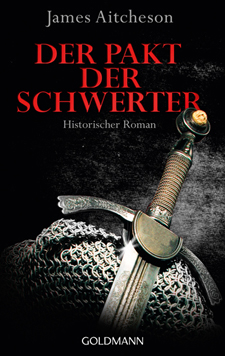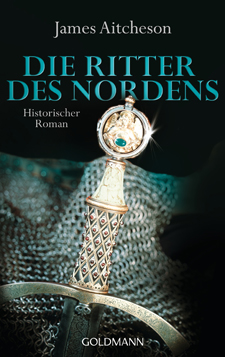Last week I ventured northwards to York for the annual Jorvik Viking Festival. For the 27th year, Norsemen took over the city for February half-term week and set up camp in the streets, even bringing their longship into Coppergate Square for those queueing up outside the Jorvik Viking Centre to admire.
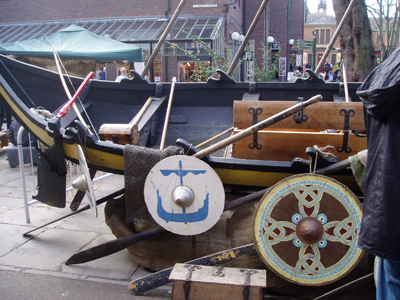
The Viking longship in Coppergate Square, outside the Jorvik Viking Centre.
I was in York to talk about Sworn Sword, the novel’s connection with the city, and what it was about York that made it such a battleground during the mid-eleventh century as English, Norman and Scandinavian forces all struggled to capture and control it. At the end I also gave a special sneak preview reading from the very first chapter of the sequel, which will be released in hardcover on 6 September (more details on that to follow soon).
York has a long history dating back to the Roman period. By the time of the Norman Conquest it was the second biggest city in England (after London): the chief town of the north of the kingdom; a major manufacturing centre for metalwork, woodwork, glass and jewellery; and a burgeoning port and trading hub with links all across Europe and beyond, even as far as Byzantium and Samarkand in modern-day Uzbekistan. In 1069 when Sworn Sword is set it would have been a fantastically vibrant place to be, with people from all cultures mixing together and a lot of wealth being brought in from abroad.
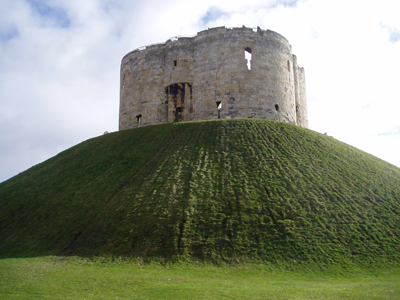
Clifford's Tower, York - the thirteenth-century keep that stands on the site of the original castle.
Militarily speaking, York was also a crucial strong-point, and whoever controlled it tended to hold sway over the vast province known as Northumbria that stretched from the Humber Estuary in the south to the borders of the Scottish kingdoms in the north.
For that reason it formed the location for some of the fiercest struggles for power witnessed in this period, both before the Conquest – the Battle of Stamford Bridge, for example, which was fought only a few miles away between the namesake kings Harold Godwineson of England and Harald Hardrada of Norway – and afterwards too. It’s not too much of an exaggeration to say that York was where in many ways the future of England was decided in those fateful years.
I visited the city a few years ago as part of my research for the novel, so that I could get a feel for the scale of the medieval city and the lie of the land. Not much of Conquest-era York survives today, but by walking the streets I was able to get a feel for the richness of the place’s history. On my return last week I also took the time to snap some pictures, the best of which you can see on this page!
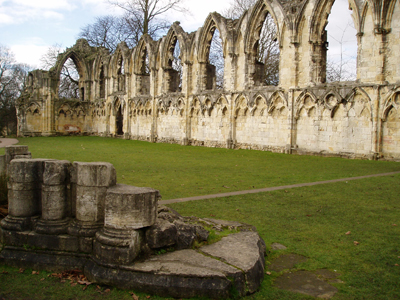
The ruins of St Mary's Abbey outside Bootham Bar to the northwest of medieval York.
One of the locations that I revisited last week was St Mary’s Abbey (pictured above), the ruins of which now lie in the Yorkshire Museum Gardens. St Mary’s was in its turn built on the site of an earlier foundation dedicated to St Olave in a district once known as Earlsburgh, which it is suggested received its name from a fortified palace belonging to the Anglo-Scandinavian earls of Northumbria that used to stand nearby.
That palace is the same one referred to in Sworn Sword as the residence of the real-life vicomte (sheriff) of York, William Malet, who was installed by King William I after the city was first captured by the Normans in 1068. Even though the site looks very different nowadays, somehow the knowledge that I was treading the same ground as my characters helped me visualise those scenes when I came to write the novel.
Thanks to the folks at York Archaeological Trust and the Jorvik Viking Centre for inviting me to come and talk. It was a pleasure to meet so many other historically-minded people and to share my love of this period. I hope it’s not too long before I find myself back in York. And for those of you reading this who have a special interest in all things Norse-related, the good news is that there are more Vikings to come in Books 2 and 3 – watch this space!
*
For information about other Viking- and medieval-themed events taking place in and around York, visit the Jorvik Viking Centre website.
Listeners to this morning’s edition of In Our Time on BBC Radio 4 were treated to a fascinating discussion about the Battle of Stamford Bridge, which took place close to the city of York on 25 September 1066. This encounter saw the famed Norwegian adventurer and warrior King Harald Hardrada pitched against the newly crowned King of England, Harold Godwineson, and were it not for what happened less than three weeks later at Hastings, it would probably be regarded as one of the most significant battles of the age.
Many of the specifics relating to the battle are impossible to know, such as how many men fought on either side, or even where exactly it took place: there is no village of Stamford Bridge recorded in Domesday Book, and it is probable that the name was purely descriptive, referring to a crossing-point somewhere on the River Derwent. The outcome, however, could not have been clearer, as the Norwegian forces were routed in a decisive victory for the English.
The near-contemporary Anglo-Saxon Chronicle records that Harold came upon them by surprise, although the story that the Norwegians had left their mail hauberks on their ships is harder to credit, since it originates from Snorri Sturluson’s Heimskringla saga, written more than 150 years after the event. Whatever the manner of the victory, what is known is that Harald Hardrada was killed along with the vast majority of his army, which included Harold Godwineson’s own brother Tostig. Indeed it is said that only 24 ships sailed back to Norway, out of a fleet of roughly 300 that had set out.
Of course Stamford Bridge was merely one episode in the story of 1066, but its repercussions were enormous. Even as Harold was engaged in the north, Guillaume (William) of Normandy was able to land unopposed at Pevensey on the south coast, before raiding the region in order to gather supplies for his army. At the same time he established a castle at Hastings, thus entrenching his position. If Harold wanted to drive the invader out of the kingdom, he therefore had little choice but to march south and do battle with him, at tremendous risk to himself and the kingdom. The dénouement of that story is of course well known.
It is worth noting finally that York and the region around it continued to be a battleground for years to come. The second-largest city in England at the time, it was a rich centre for trade and a vital strong-point in the north of the kingdom, making it a key target in 1069 when Eadgar Ætheling led his army against the Normans: a tale shortly to unfold when Sworn Sword is released in hardback on 4 August.

